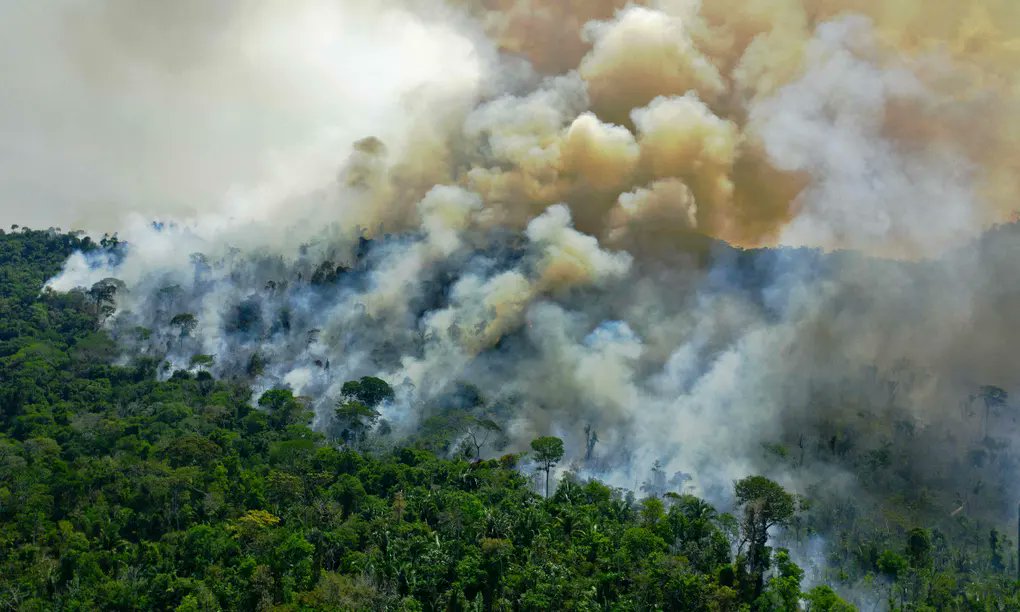Introduction
The Amazon rainforest, often referred to as the “lungs of the Earth,” has been a critical component of our planet’s ecosystem for millions of years. However, over the past four decades, alarming changes in the Amazon’s climate have begun to reshape this vital region. Recent research suggests that the Amazon’s dry season is becoming longer, and this could be an early warning signal that the combined rainforest and South American monsoon systems are approaching a critical threshold. In this blog, we’ll explore the consequences of these changes and how human activities, such as driving, shopping, meat consumption, and flying, are contributing to the destruction of the Amazon and its remarkable biodiversity.

The Amazon’s Changing Climate
A recent study reveals that over the past 40 years, the Amazon’s dry season has grown longer. This shift in the region’s climate is a direct result of global warming and the disruption of the delicate balance that sustains this unique ecosystem. While the Amazon has always had a dry season, the extended duration of this period is a cause for concern. The dry season’s lengthening threatens the rainforest’s resilience and its ability to recover, putting immense pressure on its diverse range of plant and animal species.
The Amazon’s Role in Our Planet’s Health
The Amazon rainforest is a global treasure. It covers approximately 6.7 million square kilometers and is home to around 10% of the known species on Earth. The rainforest not only serves as a habitat for countless plant and animal species but also plays a crucial role in regulating the Earth’s climate. Through a process known as transpiration, the Amazon releases water vapor into the atmosphere, which contributes to cloud formation and rainfall patterns, affecting weather systems worldwide.
Furthermore, the Amazon absorbs vast amounts of carbon dioxide (CO2) through photosynthesis, making it a vital carbon sink. This function helps mitigate the impacts of climate change by removing CO2 from the atmosphere. However, as the climate changes and the dry season extends, the Amazon’s capacity to sequester carbon and regulate the global climate is compromised.

Human Activities and the Amazon’s Decline
While climate change is a significant driver of the Amazon’s changing climate, human activities have accelerated this decline. Four key factors play a prominent role in the degradation of this critical ecosystem:
- Deforestation: Large-scale clearing of land for agriculture, logging, and infrastructure development has reduced the Amazon’s forest cover. This not only releases stored carbon but also disrupts the local climate and harms wildlife habitats.
- Agriculture and Meat Production: The demand for beef and soy products, often linked to animal agriculture, fuels deforestation in the Amazon. As more land is cleared for cattle ranching and soy farming, the rainforest’s ability to withstand climate change diminishes.
- Emissions from Transportation: The burning of fossil fuels for transportation, including cars and planes, contributes to global warming. Increased emissions further exacerbate the climate crisis, impacting the Amazon and other vulnerable ecosystems.
- Consumerism: The choices we make as consumers have far-reaching consequences. Our purchases, from meat and dairy products to the gadgets we buy, can indirectly support industries that contribute to the Amazon’s decline.
Looking Forward
The study’s findings concerning the lengthening dry season in the Amazon should serve as a wake-up call. The health of the Amazon rainforest is closely connected to the health of our planet. To address this critical issue, we need to take action on multiple fronts:
- Reducing Carbon Emissions: We must urgently decrease our carbon emissions by transitioning to renewable energy sources, adopting energy-efficient technologies, and promoting sustainable transportation.
- Halting Deforestation: It is vital to implement and enforce policies that prevent further deforestation and protect existing forests.
- Supporting Sustainable Agriculture: Promoting sustainable farming practices, reducing meat consumption, and supporting responsible sourcing of products can help preserve the Amazon’s biodiversity.
- Raising Awareness: Spreading awareness about the Amazon’s plight and the importance of preserving it can encourage people and governments to take action.
Conclusion
The Amazon rainforest’s extended dry season is a troubling sign that we are approaching a critical tipping point. Climate change, driven by human activities such as deforestation, meat consumption, and excessive carbon emissions, threatens not only the Amazon but also the balance of our global ecosystem. To protect the Amazon and its exceptional biodiversity, we must acknowledge our role in its decline and take immediate and meaningful steps towards sustainability and conservation. The future of our planet depends on it.
Its like you read my mind! You seem to understand so much approximately this,
like you wrote the book in it or something. I feel that you could
do with a few % to power the message home a little bit, but
instead of that, this is fantastic blog. A fantastic read.
I’ll definitely be back.